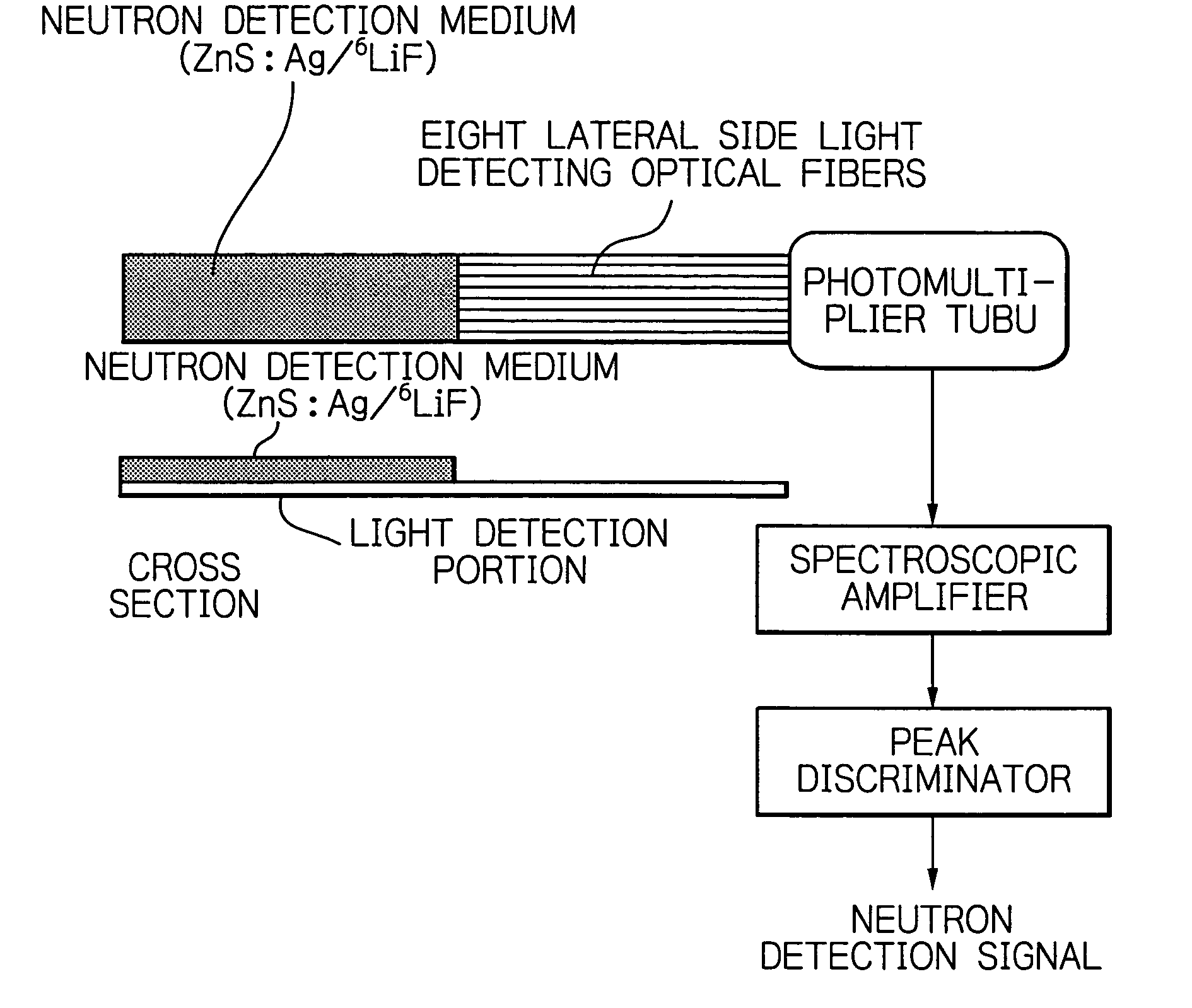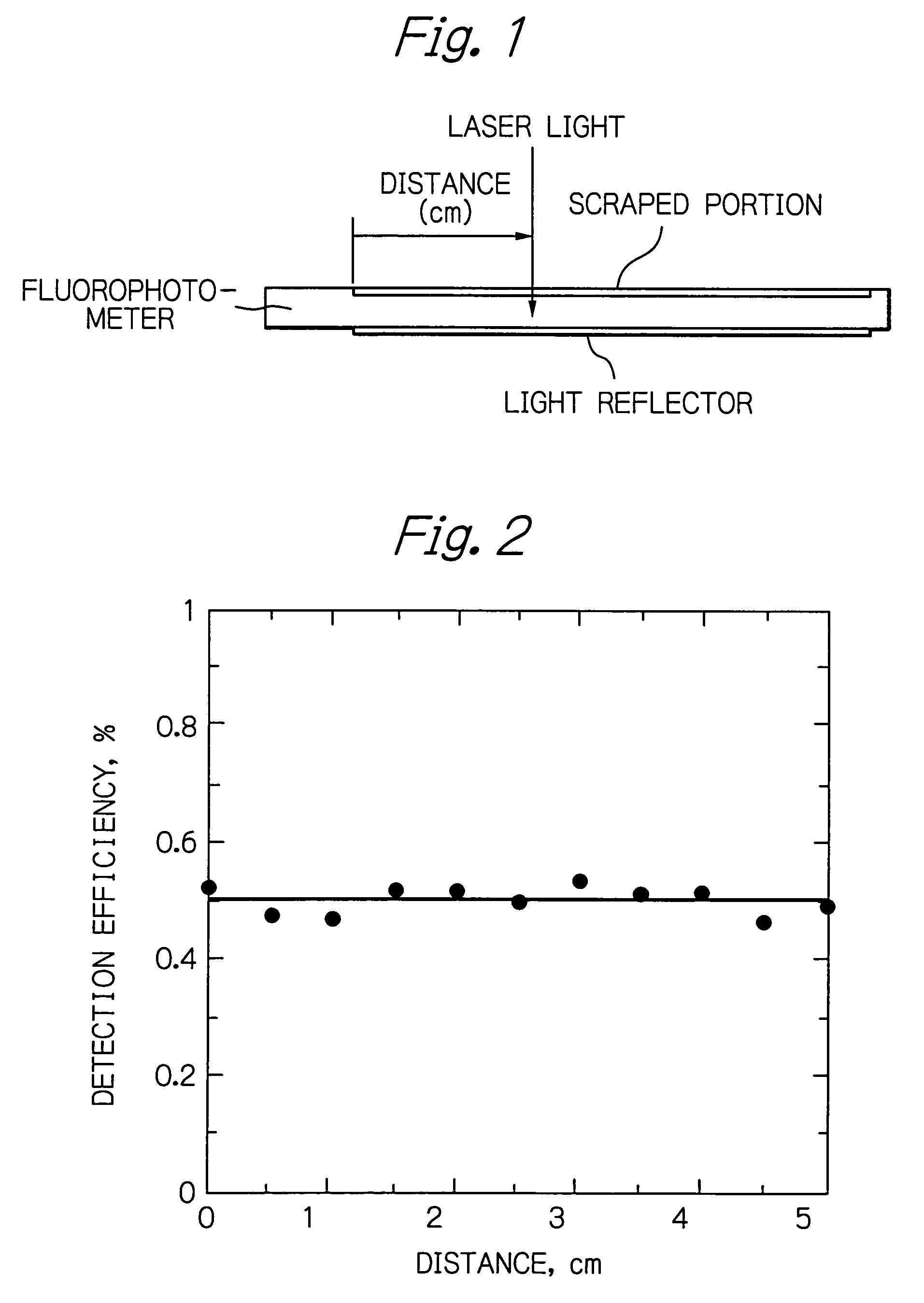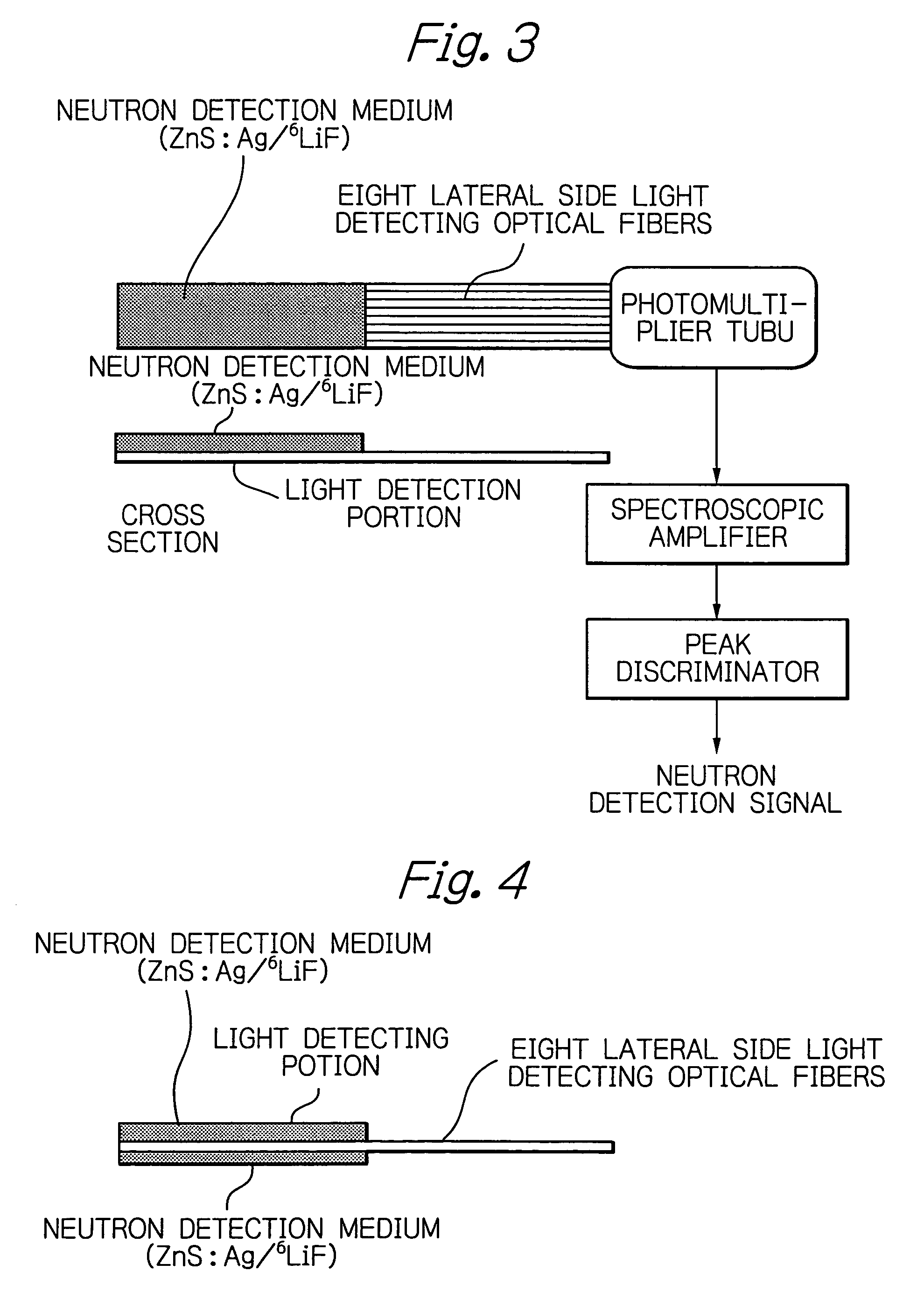Radiation or neutron detector using fiber optics
a fiber optics and detector technology, applied in the field of fiber optics-based radiation or neutron detectors, can solve the problems of increasing the number of wavelength shifting fibers, the sensitivity of gamma-rays, and the gamma-ray background, and achieve the effect of reducing the gamma-ray background
- Summary
- Abstract
- Description
- Claims
- Application Information
AI Technical Summary
Benefits of technology
Problems solved by technology
Method used
Image
Examples
example 1
[0029]A clear optical fiber BCF-98 (Bicron Co.) having a square cross section 0.5 mm long on each side had one of the four lateral sides scraped off by a depth of 20 μm over a length of 5 cm and a sheet of white paper was attached to the opposite side as a light reflector. For schematic representation of this optical fiber, see FIG. 1. The position profile characteristics of the fluorescence as emitted from the resulting lateral side light detecting optical fiber were measured with a modified fluorophotometer. As shown in FIG. 2, a substantially uniform profile was obtained for the entire 5-cm range. The detection efficiency as calibrated with a 678 nm laser light source was about 0.5%.
[0030]In Example 1, eight lateral side light detecting optical fibers of the type described above were bundled and connected to a neutron detection sheet comprising a mixture of a phosphor and a neutron converter. The thus assembled neutron detector is shown schematically in FIG. 3. The neutron detect...
example 2
[0031]In Example 2, the side of a clear optical fiber which was opposite the scraped side was fitted with a sheet of white paper, TEFLON™ (registered trademark) plate, or coated with white paint, or fitted with aluminum foil or polystyrene plate, and detection efficiency measurement was made at a point 2 cm away from the fiber end. The results are shown in Table 1. For comparison, the results with a black plate and an aluminum plate are also shown. According to the invention, the light detection efficiency was in the range of 0.4% to 0.5% upon incidence on the scraped side; on the other hand, when the black and aluminum plates making no random reflection were used, the detection efficiency was 0.04% and 0.2%, respectively, which were almost less than half the values for the present invention. Example 2 of the invention is obviously effective.
[0032]
TABLE 1Incidence on scrapedIncidence on backMaterialside (%)side (%)Black plate0.040.04Aluminum plate0.200.09Aluminum foil0.260.10(with g...
example 3
[0033]In Example 3, the side of a clear optical fiber which was opposite the scraped side was fitted with a white phosphor powder as a random reflector. The neutron detector of Example 3 is shown schematically in FIG. 4, from which one can see that a phosphor was placed on both the scraped side and the backside. As Table 1 shows, the light detection efficiency with the phosphor was 0.55% for the incidence on the scraped side and 0.33% for the incidence on the backside. When a neutron detection medium (0.4 mm thick) comprising a mixture of ZnS:Ag and the neutron converter 6LiF is used as the phosphor, more than 1500 photons are emitted upon incidence of a neutron. Even if the detection efficiency is 0.33%, five photons are transmitted to the photo detector. When a photomultiplier tube having a quantum efficiency of about 20% is used as the photo detector, a photon provides one electrical signal and neutrons can be reasonably detected by a photon counting technique. Being opaque, the ...
PUM
| Property | Measurement | Unit |
|---|---|---|
| size | aaaaa | aaaaa |
| size | aaaaa | aaaaa |
| length | aaaaa | aaaaa |
Abstract
Description
Claims
Application Information
 Login to View More
Login to View More - R&D
- Intellectual Property
- Life Sciences
- Materials
- Tech Scout
- Unparalleled Data Quality
- Higher Quality Content
- 60% Fewer Hallucinations
Browse by: Latest US Patents, China's latest patents, Technical Efficacy Thesaurus, Application Domain, Technology Topic, Popular Technical Reports.
© 2025 PatSnap. All rights reserved.Legal|Privacy policy|Modern Slavery Act Transparency Statement|Sitemap|About US| Contact US: help@patsnap.com



